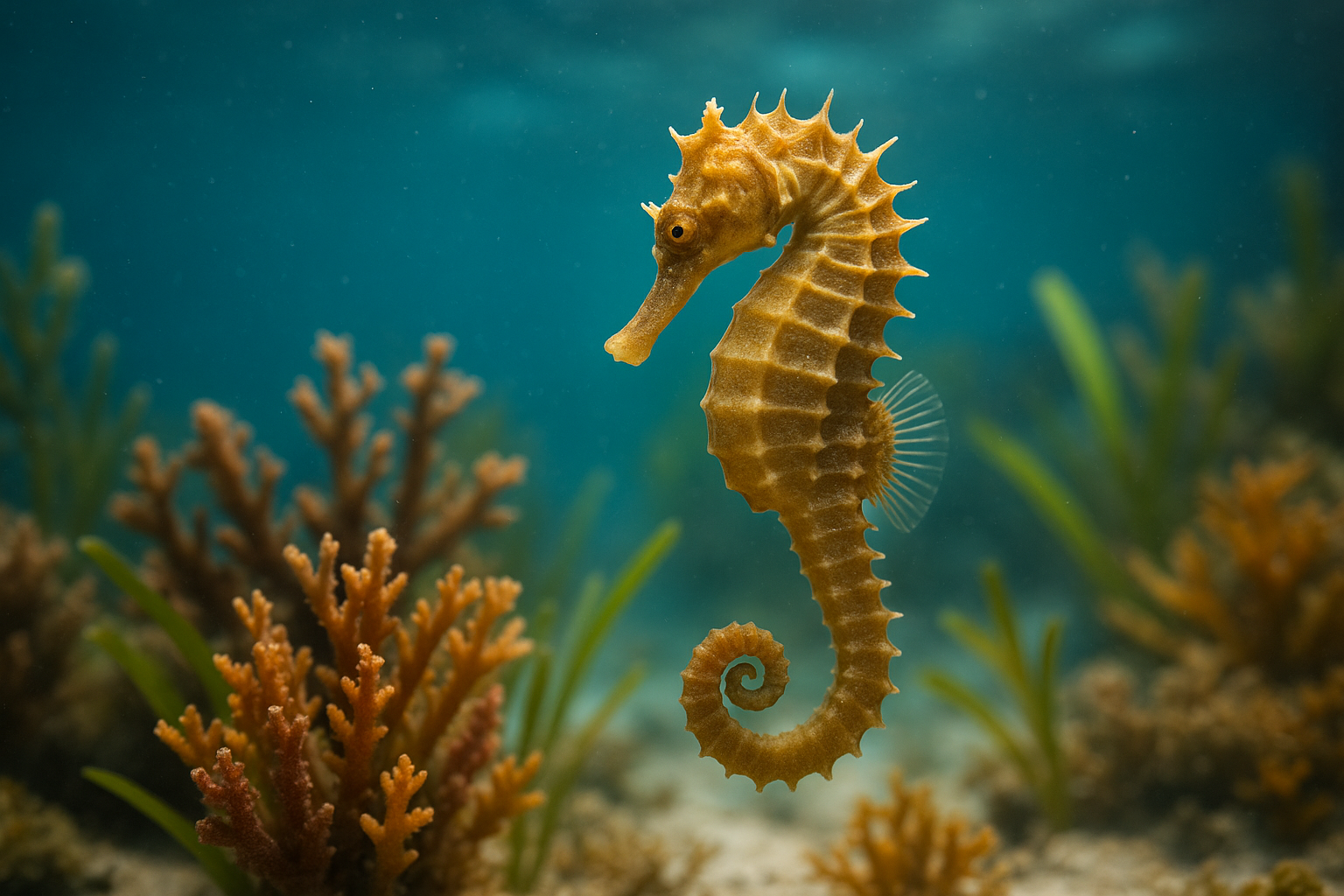The Majestic World of Seahorses: Unveiling the Mysteries
As a child, you may have been enchanted by the delicate and fantastical image of seahorses. They stood out among the other sea creatures, with their horse-like heads, prehensile tails, and unique mode of locomotion. But there's more to these marine marvels than their whimsical appearance. This article explores the captivating world of seahorses, delving into their biology, behavior, and the threats they face in the wild.

A Glimpse into the Seahorse World
The term “seahorse” refers to 46 species of marine fish in the genus Hippocampus. These creatures are found in shallow tropical and temperate waters throughout the world. The Greek origin of their name, ‘hippos’ for horse and ‘kampos’ for sea monster, perfectly encapsulates their mythical appearance. They’re recognized for their distinct body shape, with a bent neck and long, curled tail, which they use to anchor themselves to seagrass and corals.
The Fascinating Biology of Seahorses
Seahorses are unique in several ways, notably for their reproductive process. In a reversal of the typical roles, it’s the male seahorse that becomes pregnant. The female deposits her eggs into a pouch on the male’s abdomen, where he fertilizes and carries them until they’re ready to hatch. This distinctive trait is a rare occurrence in the animal kingdom, making seahorses a subject of much scientific interest.
Unusual Feeding Habits
Seahorses have an unusual method of hunting. They are ambush predators that use their long snouts to suck in tiny crustaceans and small fish. Despite their slow-moving nature, they’re surprisingly effective hunters, thanks to their ability to blend in with their surroundings and move stealthily towards their prey.
Current Threats and Conservation Efforts
Like many marine species, seahorses face threats from human activities. Habitat loss, pollution, and overfishing for use in traditional medicine and the aquarium trade have led to a decline in their population. However, conservation efforts are underway to protect these enchanting creatures. The Convention on International Trade in Endangered Species (CITES) regulates the international trade of seahorses, and several marine protected areas have been established to protect their habitats.
The Economic Impact of Seahorses
Seahorses play a significant role in the global economy. They’re popular in the aquarium trade, with several captive breeding programs established to meet demand and reduce pressure on wild populations. In traditional Chinese medicine, they’re believed to have healing properties, contributing to a multi-million dollar industry. However, these practices have been criticized for their environmental impact, leading to calls for sustainable alternatives.
In conclusion, seahorses are fascinating creatures that capture our imagination with their unique biology and behavior. Despite the threats they face, efforts are underway to ensure their survival, reminding us of the importance of conservation in maintaining the world’s biodiversity. While they may seem otherworldly, they are a critical part of our planet’s rich tapestry of life, deserving of our admiration and protection.



